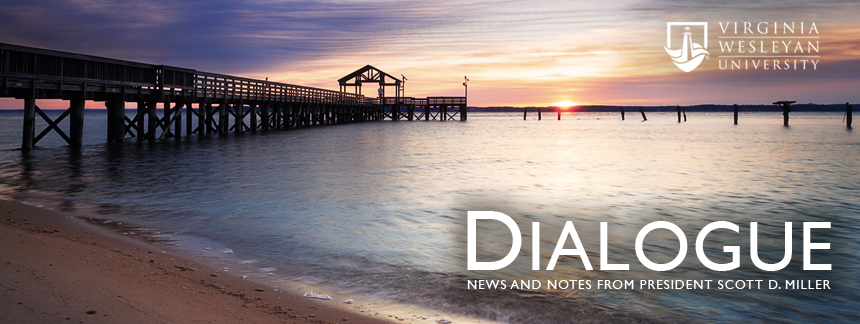(College Planning and Management, April 2009 - by Scott D. Miller and Marylouise Fennell)
It’s the vision thing. Besides love, perhaps more has been written about leadership and vision than about any other topic. In 1910, American architect and city planner Daniel Hudson Burnham, speaking to the Town Planning Conference in London, advised, “Make no little plans; they have no magic to stir men’s blood and probably themselves will not be realized.” Burnham was a wise man and correctly envisioned that his sons and grandsons would go on to “do things that would stagger us.”
These words ought to be posted above every college CEOs desk. Although Burnham’s widely disseminated remarks referred to physical structures, they apply to all realms of leadership. “Small plans,” like nondescript buildings, fail to inspire, and are often razed prematurely.
In earlier articles, we’ve talked about the importance of presidents’ first steps in their tenure. Seek advice. Listen. Make cautious decisions. Strive for consensus.
We’ve suggested that identifying, retaining and hiring talented senior staff who complement the strengths of a new president is a critical piece of his or her success in office, a process known collectively as ''teambuilding." One crucial, yet often-overlooked aspect of a new presidency is the role of senior staff who will work collegially with the new CEO to execute and communicate the institutional vision. It is critical that the president carefully select and nurture talented individuals who, generally, should possess expertise superior to that of the CEO in their respective areas. If the president does a good job of appointing senior staff, they will serve as the prime agents in communicating a vision and implementing institutional goals.
We’ve also strongly recommended that the Board should authorize a comprehensive Institutional Review. There is one national, highly acclaimed firm that has been praised for its work, as well as some smaller firms. One such firm is James L. Fisher, LTD., of Venice, Fla. A team widely experienced in higher education and not having any present association with the college should review its general condition and provide a completely objective assessment that should include: (a) Candidly identifying and addressing issues affecting the campus and helping establish a tentative agenda for the immediate future; (b) Helping the Board and the new president assess and illuminate overall conditions; (c) Providing the Board with a more accurate impression of the college and approving more specific and realistic expectations; and (d) Using a public report on the results as a vehicle for enhancing the awareness and visibility of the college in the community, region, state and beyond.
But perhaps the most important leadership quality that a new CEO must display is an overarching vision for the institution. We submit that this is the time to “think big.” It’s axiomatic in strategic planning that objectives be realistic enough to be achievable, but ambitious enough to inspire.
Our recommendations for strategic vision include the following:
- Throw away the “box.” It is becoming a limiting factor. Creative thinking should not merely be “out of the box; rather, let’s do away with “the box” entirely. Take a second look. Opportunities, it’s been said, are often things you haven’t noticed the first time around.
- Avoid a “laundry list.” “To do” lists will fail to inspire, let alone motivate, staff. As CEO, your job is to set the course, not to steer the ship. Look at the big picture, not the fine print.
- Start with the end in mind. What do you want your legacy to be? How do you want your college to look 5, 10, 15 years from now? What will your institution feel like? Look like? What will others say about it? On beginning presidencies, we’ve sometimes told stakeholders that in a decade or so, we hope to be at “a much better institution” – our own college after strategic plans are successfully implemented.
“Make big plans; aim high in hope and work, remembering that a noble, logical diagram once recorded will never die, but long after we are gone will be a living thing, asserting itself with ever-growing insistency.” Although Burnham died in 1912, two years after his famous paper was read, his wisdom rings true almost a century later.
# # #
Dr. Scott D. Miller is president of Bethany College in West Virginia. He is now in his 19th year as a college president.
Dr. Marylouise Fennell, RSM, a former president of Carlow University in Pittsburgh, PA, is senior counsel for the Council of Independent Colleges (CIC) and principal of Fennell Associates, Higher Education Services. Both serve as consultants to college presidents and boards.
